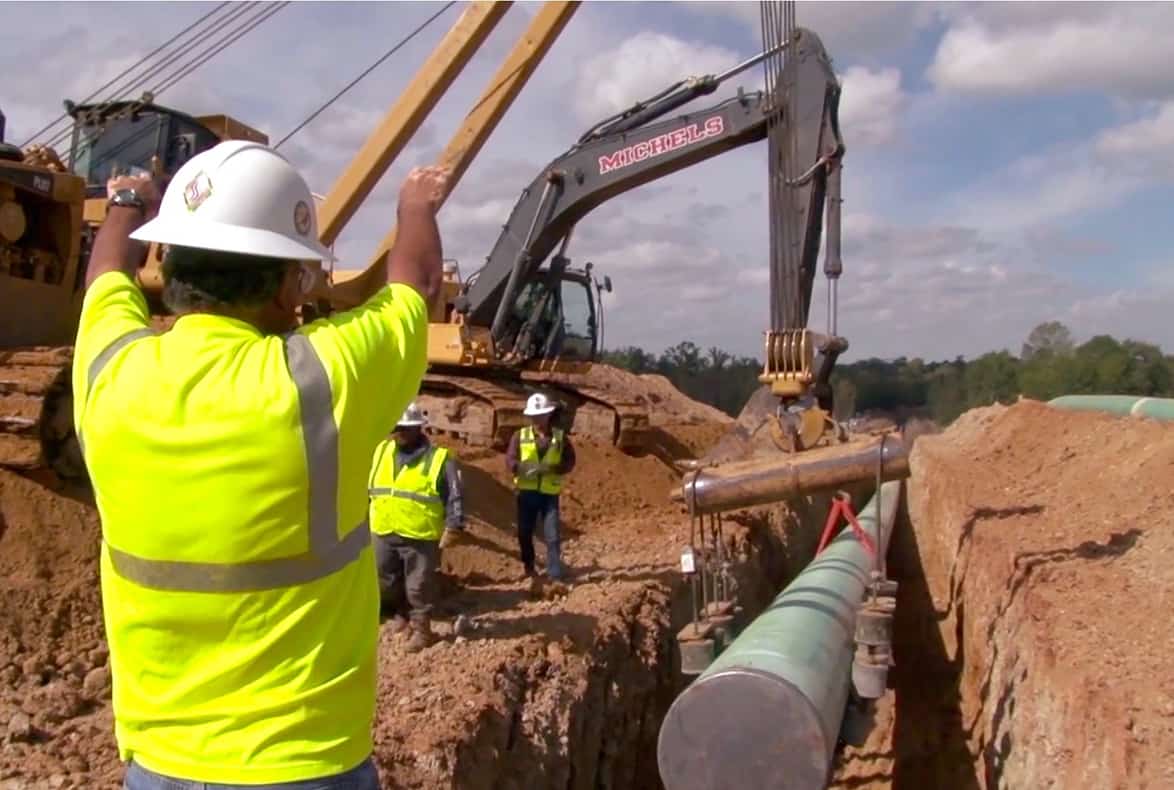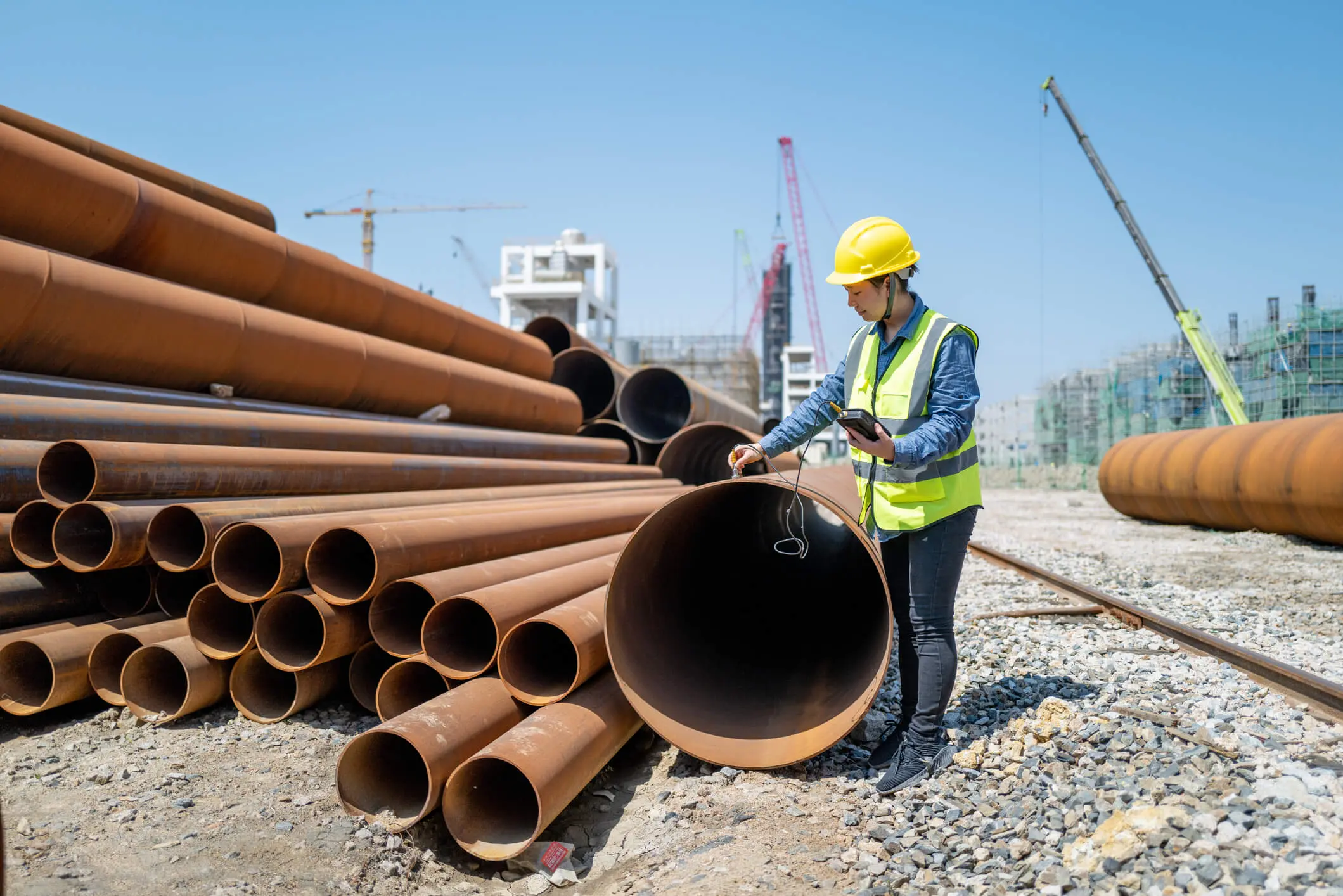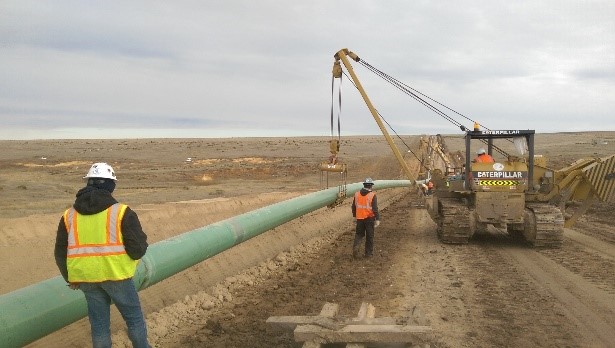The Evolution of Leak Detection Technology with Creek Pipe Midland
Wiki Article
Introducing the Newest Innovations in Pipes for Reliable Water Administration
The advancement of pipe modern technology is reshaping water management methods. Current innovations, particularly in smart sensor modern technology and leakage discovery systems, promise improved efficiency and sustainability. These improvements enable real-time tracking and predictive upkeep, resolving critical water obstacles. As neighborhoods venture for strength, the duty of environmentally friendly materials becomes significantly substantial - Creek Pipe Company LLC. What various other developments are on the horizon that could further change our method to water resource management?Developments in Smart Sensor Innovation
As water administration systems end up being increasingly complicated, innovations in smart sensing unit innovation play a crucial duty in enhancing performance and sustainability. These sensing units allow real-time surveillance of water quality, circulation rates, and pressure degrees, supplying vital information for efficient administration. By integrating Internet of Points (IoT) abilities, clever sensing units facilitate remote accessibility and data analytics, enabling operators to make informed choices swiftly.Moreover, predictive upkeep ends up being possible with using sophisticated algorithms that analyze sensing unit data to anticipate potential failings before they take place. This aggressive approach decreases downtime and decreases repair work prices. Furthermore, smart sensing units contribute to the preservation of water sources by identifying leaks and abnormalities in the system, making sure prompt activity is required to minimize waste. In general, the application of clever sensing unit innovation in water monitoring pipelines notes a significant action towards enhancing source use and promoting ecological sustainability.Eco-Friendly Materials for Sustainable Pipelines
Innovative methods in water management pipelines increasingly incorporate green materials to enhance sustainability. These products objective to lessen ecological influence while keeping toughness and effectiveness. Biodegradable plastics, for example, are gaining grip as feasible options to conventional PVC, reducing lasting waste in land fills. Additionally, recycled products, such as reclaimed rubber and metal compounds, are being used to create durable pipe systems that significantly lower carbon footprints.Moreover, bio-based materials originated from renewable sources are arising as promising options, providing both durability and lowered dependence on fossil gas. Suppliers are also discovering innovative layers that enhance rust resistance while remaining eco benign. These developments not only advertise a circular economy yet likewise align with worldwide sustainability goals. As water shortage comes to be a pressing issue, the adoption of eco-friendly materials in pipe building and construction stands for a pivotal action towards responsible water monitoring and source preservation.
Real-Time Tracking and Information Analytics
While typical water administration systems often depend on regular assessments, the combination of real-time tracking and data analytics has transformed the landscape of pipeline management. This cutting-edge approach enables operators to continuously track water pressure, circulation, and high quality, promoting instant responses to potential concerns - Creek Pipe Texas. By leveraging advanced sensing units and IoT technology, information is gathered and examined instantly, offering workable understandings that enhance decision-making processes.Real-time analytics not only boosts operational effectiveness however likewise helps in source allowance, guaranteeing that water distribution is maximized. Predictive analytics can forecast demand patterns, enabling proactive measures to be applied, therefore lowering waste and improving sustainability efforts. The ability to imagine data through control panels aids in determining fads and abnormalities, which is necessary for maintaining the integrity of water supply systems. This shift in the direction of real-time tracking represents a significant advancement in guaranteeing the performance and sustainability of water management pipes.Developments in Leakage Detection Equipments
The increase of real-time tracking has paved the method for advancements in leakage detection systems within water management pipes. Modern technologies, consisting of acoustic sensing units and fiber optic wires, make it possible for drivers to identify leaks with unprecedented accuracy. Acoustic sensors, for example, spot acoustic waves produced by escaping water, enabling immediate location pinpointing. In comparison, fiber optic systems make use of temperature modifications along the pipeline to reveal abnormalities a measure of leaks.Additionally, equipment discovering formulas are being employed to assess data collected from these sensors, enhancing anticipating maintenance capabilities. By processing historical information and identifying patterns, these systems can anticipate potential leakage places before they happen, minimizing water loss and decreasing repair work costs.Furthermore, assimilation with geographical details systems (GIS) permits much better visualization and administration of pipeline networks, enhancing the feedback to detected leaks. Collectively, these technologies signify a transformative change in how water management systems address leak detection.Improved Resilience and Longevity of Pipeline Products
Innovations in pipe materials are significantly enhancing the longevity and durability of water management systems. Ingenious products, such as high-density polyethylene (HDPE) and enhanced concrete, are confirming to be extra immune to deterioration, stress, and ecological stressors. These modern-day materials not just expand the life expectancy of pipelines however additionally decrease upkeep prices and the frequency of repairs.Additionally, advancements in composite materials, which combine different compounds to enhance efficiency, are being used for their remarkable strength-to-weight proportion and versatility. This makes it possible for pipes to much better endure extreme climate condition and ground movements.Moreover, the intro of safety finishes additionally enhances the resilience of pipelines against chemical degradation and physical wear. Consequently, water monitoring systems are coming to be more trusted and sustainable, ensuring the effective delivery of water sources while reducing the environmental effect related to frequent pipeline substitutes.Integration of IoT in Water Distribution Networks
As water circulation networks progress, the combination of the Internet of Points (IoT) is transforming the method water resources are taken care of and kept track of. Smart sensors and linked gadgets allow real-time data collection on water quality, pressure, and flow, facilitating aggressive monitoring of infrastructure. This development allows for prompt discovery of leaks and irregularities, lessening water loss and reducing functional costs.Furthermore, IoT modern technology sustains predictive maintenance by analyzing usage patterns, which aids utilities plan repair services and upgrades much more efficiently. Boosted interaction between tools guarantees smooth information transmission, enabling improved decision-making based on accurate, updated information.Additionally, the combination of IoT cultivates water conservation initiatives by giving consumers with insights into their intake behaviors, motivating even more responsible use. In general, the IoT reinvents water distribution networks, advertising performance and sustainability in water management practices.Situation Researches: Success Stories in Water Monitoring Solutions
Numerous municipalities and companies have actually successfully implemented ingenious water administration remedies, showcasing the efficiency of modern-day innovations in dealing with water deficiency and distribution difficulties. One significant instance is the city of San Diego, which incorporated sophisticated metering infrastructure (AMI) to monitor water use in real-time, leading to a 10% decrease in usage. Creek Pipe Pipeline Construction. The water authority in Cape Community adopted a clever leakage discovery system that identified and repaired Creek Pipe Pipeline Construction leakages promptly, considerably minimizing water loss throughout the extreme dry spell of 2017. In Australia, using recycled water supply in metropolitan areas has actually proven successful, permitting sustainable irrigation practices and decreased demand on safe and clean water sources. These study show that by leveraging innovation and innovative techniques, neighborhoods can improve their water monitoring techniques, ensuring long-term sustainability and strength despite expanding water obstaclesFrequently Asked Concerns
Just how Do These Innovations Impact Water Energy Costs?
The technologies in pipe modern technology greatly decrease water loss and functional ineffectiveness. Water energies experience decreased upkeep and production costs, ultimately leading to lower costs for consumers and improved sustainability in water administration techniques.What Are the Ecological Effects of Pipe Installation?
The ecological impacts of pipeline installation can consist of environment interruption, dirt disintegration, and prospective water contamination. Contemporary methods intend to minimize these impacts, advertising lasting techniques in building and construction and long-term environmental conservation.
Exist Government Laws Affecting Pipe Innovations?

Federal government policies considerably affect pipe advancements, mandating conformity with environmental criteria and safety methods. These policies aim to reduce eco-friendly dangers while promoting improvements in modern technology, ultimately shaping the future of pipe infrastructure and water administration practices.

Exactly How Can Consumers Advantage From These Pipeline Advancements?
Consumers can profit from these pipeline innovations via enhanced water high quality, reduced costs, enhanced integrity, and increased accessibility to tidy water. Developments bring about much more efficient source management, ultimately promoting lasting methods within neighborhoods.What Future Fads Can We Expect in Water Management Pipelines?
Future trends in water administration pipelines might consist of enhanced automation, wise surveillance technologies, and lasting materials. These developments aim to enhance performance, decrease leaks, and boost total water high quality, ensuring source preservation for future generations. As water circulation networks progress, the integration of the Web of Points (IoT) is transforming the way water resources are handled and kept track of. Various communities and companies have effectively applied cutting-edge water management options, showcasing the efficiency of modern-day innovations in resolving water shortage and distribution challenges. The water authority in Cape Town took on a smart leak detection system that determined and fixed leakages promptly, substantially decreasing water loss throughout the serious drought of 2017. In Australia, the use of recycled water systems in urban areas has verified effective, permitting for sustainable watering methods and lowered demand on drinkable water sources. Customers can benefit from these pipe innovations with improved water high quality, minimized costs, enhanced integrity, and raised accessibility to tidy water.Report this wiki page